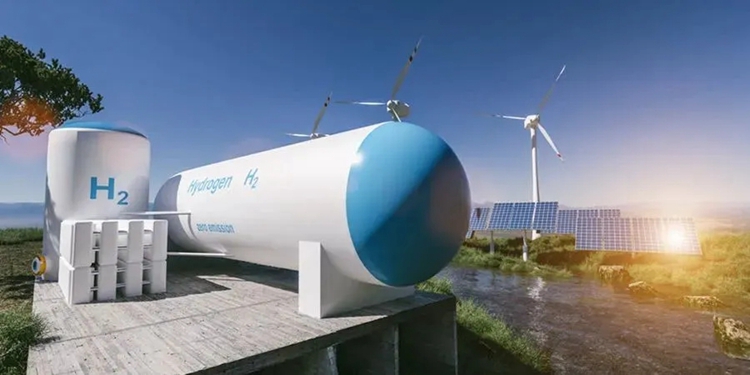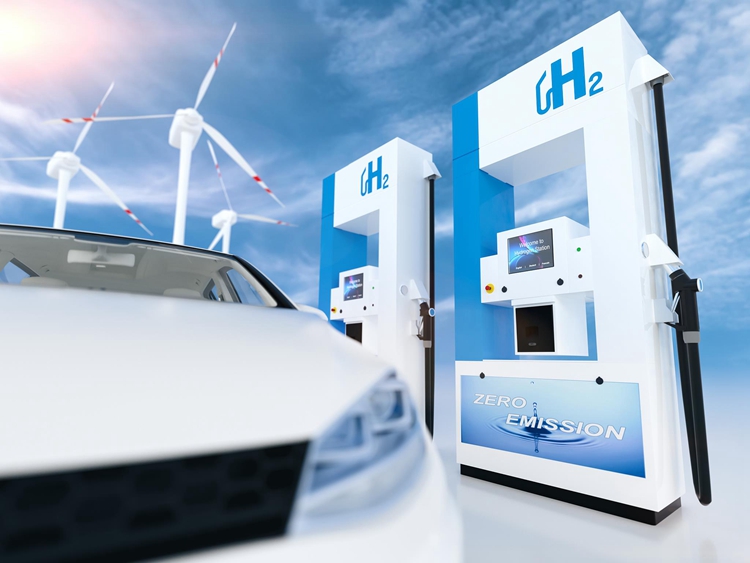The UAE National Oil Company and Dubai Electricity and Water Authority (DEWA) have recently cooperated to open the first green hydrogen fuel station in the Middle East, the "Future Service Station", in Dubai Expo City. (Photo: Guan Kejiang) Saif Al Falasi, Chief Executive Officer of the UAE National Oil Company, said at the unveiling ceremony that the hydrogen industry will play a key role in Dubai's move toward a green economy. The UAE government officially released a national hydrogen energy strategy not long ago, planning to make the country's green hydrogen capacity reach 500,000 tons per year by 2031 and blue hydrogen capacity reach 400,000 tons per year.
At present, the UAE, Saudi Arabia, Oman and other Gulf countries have introduced policies and initiatives to accelerate the cultivation of the hydrogen energy industry, in order to explore the path to realize the energy transition and the goal of combating climate change. Abu Dhabi National Oil Company (ADNOC) recently announced that it has opened a high-speed hydrogen refueling pilot station in Masdar City, UAE, which is the first high-speed green hydrogen refueling pilot station in the region integrating hydrogen production and refueling.2023 On November 28, Wichtenstein Automotive Co., Ltd. delivered the country's first hydrogen-powered bus for the UAE, in cooperation with Abu Dhabi Municipality and Transportation Department's Integrated Transportation Center. UAE Minister of Energy and Infrastructure Suhail Mazrouei said that hydrogen energy will play an important role in the global energy transition. The National Hydrogen Strategy will help the UAE achieve its net-zero emissions target by 2050 and accelerate the development of a hydrogen economy.

Saudi Arabia's "Vision 2030" proposes to achieve the goal of producing 4 million tons of hydrogen annually by 2030. According to the plan, Saudi Arabia will invest 1 trillion Saudi riyals (1 Saudi riyal is about 1.89 yuan) to produce clean energy, green steel, green aluminum and other products at competitive prices. Saudi Arabia will also invest $8.4 billion to build a large green hydrogen manufacturing plant in the new Future City by the Red Sea, according to the Gulf Times. When completed in 2026, the plant is expected to produce more than 600 tons of green hydrogen per day.In October 2023, the first hydrogen-powered passenger train opened by Saudi Railways in partnership with France's Alstom was commissioned in the Saudi capital, Riyadh, marking the first time that hydrogen train technology has entered the Middle East and Africa.
Oman also has ambitious plans for hydrogen energy development. 2022, Oman set a goal of net-zero emissions by 2050, and is looking to hydrogen energy as an important way to achieve carbon neutrality, with plans to produce at least 1 million tons of hydrogen per year by 2030, and 8.5 million tons by 2050. 2023, August 2023, Oman's Sultan Qaboos port in Muscat welcomed the world's first liquefied hydrogen In August 2023, Oman welcomed the world's first liquefied hydrogen carrier, the Suisu Frontier, which is seen as an experimental platform to promote research and development in the field of hydrogen, and in October, Oman announced that it will set up a pilot project for a green hydrogen refueling station in the special economic zone of Dukhun, which will include the production of renewable energy and green hydrogen from solar and wind, the construction of a hydrogen refueling station, and the operation of vehicles powered by green hydrogen fuel. A report released by the International Energy Agency concluded that Oman is expected to become one of the world's largest exporters of green hydrogen by 2030.

Global Energy Internet Development Cooperation Organization Economic and Technological Research Institute vice president Xiao Jinyu said in an interview with this reporter, the development of hydrogen energy in the Gulf countries have unique advantages, one is rich in clean energy resources, according to estimates, the region's wind power, photovoltaic power generation can be developed with an installed capacity of more than 7.5 billion kilowatts and 1,600 billion kilowatts, respectively; the second is the obvious advantages of geographic location, and has a good energy commodities trade infrastructure Secondly, the geographical location advantage is obvious, and has a good energy commodity trade infrastructure and settlement system, the existing oil and gas storage and transportation facilities can be adapted to the development of green hydrogen and other industries, green hydrogen or hydrogen derivatives to Europe, East Asia and other energy centers have an advantage in export.
Xiao Jinyu said that the Gulf countries will give full play to their resource endowments while driving the synergistic development of clean energy power generation, electric hydrogen production, green chemical industry chain, etc., to realize the green and low-carbon transformation of the energy industry, to maintain its position as a global energy center, and to promote the diversified development of the economy.

